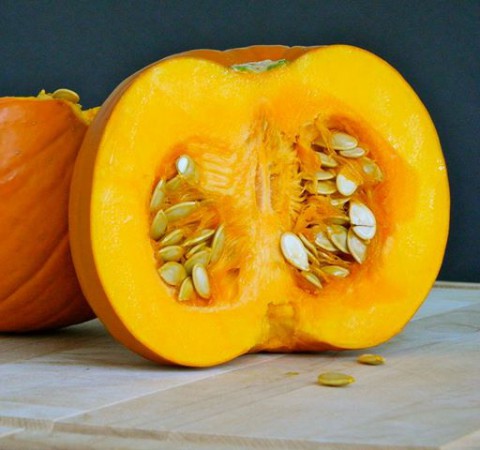 If variety really is the spice of life, then eating seasonal favorites can keep culinary habits from getting stale, and this time of year it’s all about the gourd. From butternut squash to pumpkins, edible gourds are everywhere. As Halloween approaches, nutritionists weigh in on America’s favorite orange harbinger of spook and fright – the great and somewhat mysterious pumpkin. Whether it’s baked, stewed or sautéed, pumpkins come in many varieties which hold the nutritionists’ seal of approval for positive health benefits.
If variety really is the spice of life, then eating seasonal favorites can keep culinary habits from getting stale, and this time of year it’s all about the gourd. From butternut squash to pumpkins, edible gourds are everywhere. As Halloween approaches, nutritionists weigh in on America’s favorite orange harbinger of spook and fright – the great and somewhat mysterious pumpkin. Whether it’s baked, stewed or sautéed, pumpkins come in many varieties which hold the nutritionists’ seal of approval for positive health benefits.
Pumpkins, squash varieties and decorative gourds all belong to the same genetic family, Cucurbita. Pumpkins are native to the Americas, with origins from Mexico dating back over 6000 years. Today, over a billion pounds of pumpkin are produced in the U.S. annually. The smaller-sized varieties are generally better for culinary experimentation, while gigantic pumpkins are sometimes grown for bragging rights. Currently, the world record-holder for largest pumpkin weighed in at just a little over 2000 pounds.
Their impressive versatility and nutritional appeal make gourds a healthy favorite. For starters, pumpkins contain beta-carotene, lutein and zeaxanthin which are all linked to vision health. They contain all the B-vitamins in smaller doses as well as vital minerals such as magnesium, manganese, phosphorus and potassium. These fall favorites also offer other vitamins like C, E and K and the seeds provide a crunchy portion of protein and the oil derived from pressing the seeds delivers a flavorful helping of healthy fats.
For clinical nutritionists, the pumpkin offers variety for patients. Pumpkins are easy to prepare by sectioning and roasting in the oven with olive oil. The seeds can be toasted and ground on top of soups, sandwiches or salads. Once the pumpkin is cooked and cooled it can be easily scooped out of its shell and frozen in baggies for later preparation. For clients who are looking for easy ways to add more healthy options to their diet, roasting a pumpkin and adding seasonings is about as easy as it gets. Pumpkin soup and other side dishes can also be easily prepared in a short time with and few common ingredients.
Being a successful nutritionist is not only about the science, but also about knowing how to direct clients to affordable and attractive choices. Eating seasonally saves money and keeps food routines from becoming boring. Changing habits can be hard, so having fun while making important food-choice changes is a vital part of a successful prescription for life-long healthy eating.
For nutritionists looking to spice up their clients’ culinary repertoire, check out the delicious contemporary recipes from the experts at the Institute for Integrative Nutrition.









